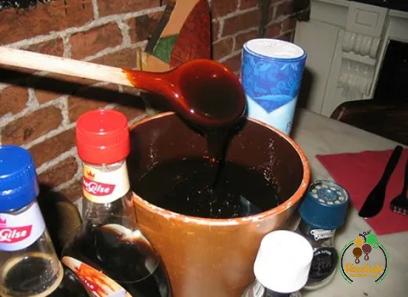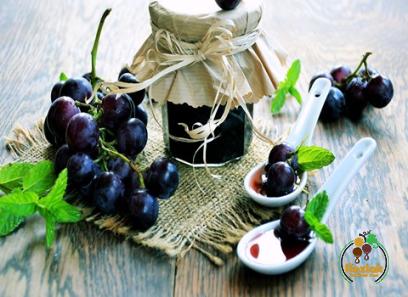While commercial grape juice options are widely available, there is something truly special about making your own grape juice at home. In this article, we will explore the wonderful world of grape juice DIY, providing you with valuable tips and advice on every step, from growing your own grapes to crafting delicious juice. 1. Cultivating Your Own Grapes: The first step to creating your own grape juice is cultivating your own grapevines.

.
 Suitable grape varieties for juice-making include seedless grapes like Concord, Thomcord, or Niagara, each with their unique flavors. Prepare a sunny spot with well-drained soil, ensuring adequate space for the growing vines to flourish. Learning about the specific pruning techniques and essential care requirements for your chosen grape variety will greatly contribute to a bountiful crop. 2. Harvesting the Grapes: Once your grapevines have matured and the fruits have ripened, it is time to harvest them. Grapes should be picked when they are fully ripe, as this will ensure the best flavor and sweetness in your juice. Gently handpick the grape clusters, being careful not to damage the delicate fruits in the process.
Suitable grape varieties for juice-making include seedless grapes like Concord, Thomcord, or Niagara, each with their unique flavors. Prepare a sunny spot with well-drained soil, ensuring adequate space for the growing vines to flourish. Learning about the specific pruning techniques and essential care requirements for your chosen grape variety will greatly contribute to a bountiful crop. 2. Harvesting the Grapes: Once your grapevines have matured and the fruits have ripened, it is time to harvest them. Grapes should be picked when they are fully ripe, as this will ensure the best flavor and sweetness in your juice. Gently handpick the grape clusters, being careful not to damage the delicate fruits in the process.
..
 3. Cleaning and Preparation: Before juicing the grapes, it is essential to ensure they are clean and free from any dirt or residue. Rinse the grapes thoroughly under cool running water and remove any stems or leaves. 4. Extracting the Juice: There are various methods to extract grape juice, depending on your preference and available equipment. One popular method involves using a juicer or a blender. Simply place the cleaned grapes into the juicer or blender and process until you achieve a smooth consistency. Alternatively, crushing the grapes by hand or using a grape crusher can also be a rewarding and traditional approach. 5. Filtering and Straining: To achieve a clear and smooth grape juice, it is necessary to filter and strain the juice after extraction. Using a fine mesh strainer or a cheesecloth, strain the juice into a clean container, removing any impurities or solids. This step will result in a visually appealing and refined end product.
3. Cleaning and Preparation: Before juicing the grapes, it is essential to ensure they are clean and free from any dirt or residue. Rinse the grapes thoroughly under cool running water and remove any stems or leaves. 4. Extracting the Juice: There are various methods to extract grape juice, depending on your preference and available equipment. One popular method involves using a juicer or a blender. Simply place the cleaned grapes into the juicer or blender and process until you achieve a smooth consistency. Alternatively, crushing the grapes by hand or using a grape crusher can also be a rewarding and traditional approach. 5. Filtering and Straining: To achieve a clear and smooth grape juice, it is necessary to filter and strain the juice after extraction. Using a fine mesh strainer or a cheesecloth, strain the juice into a clean container, removing any impurities or solids. This step will result in a visually appealing and refined end product.
…
 6. Sweetening and Flavoring: Depending on personal taste preferences, you may choose to sweeten your grape juice with natural sweeteners such as honey or sugar. Adding a touch of lemon juice can also enhance the vibrancy and balance the sweetness of the juice. Experiment with different combinations to find the perfect flavor profile that suits your palate. 7. Storing and Enjoying: To preserve the freshness and flavor of your homemade grape juice, it is crucial to store it properly. Transfer the juice into clean, sterilized containers, such as glass bottles or jars, and seal them tightly. Store the grape juice in a cool, dark place or in the refrigerator, noting that it is best consumed within a week to maintain its quality. Conclusion: Embarking on the delightful journey of grape juice DIY not only allows you to create your own delicious and nutritious beverages, but it also provides a sense of satisfaction and connection to nature. From cultivating your own grapes to crafting the perfect juice, each step is an opportunity to infuse your personal touch and creativity into this ancient art. So why not explore the world of grape juice DIY today and savor the tastes of your own homemade masterpiece?
6. Sweetening and Flavoring: Depending on personal taste preferences, you may choose to sweeten your grape juice with natural sweeteners such as honey or sugar. Adding a touch of lemon juice can also enhance the vibrancy and balance the sweetness of the juice. Experiment with different combinations to find the perfect flavor profile that suits your palate. 7. Storing and Enjoying: To preserve the freshness and flavor of your homemade grape juice, it is crucial to store it properly. Transfer the juice into clean, sterilized containers, such as glass bottles or jars, and seal them tightly. Store the grape juice in a cool, dark place or in the refrigerator, noting that it is best consumed within a week to maintain its quality. Conclusion: Embarking on the delightful journey of grape juice DIY not only allows you to create your own delicious and nutritious beverages, but it also provides a sense of satisfaction and connection to nature. From cultivating your own grapes to crafting the perfect juice, each step is an opportunity to infuse your personal touch and creativity into this ancient art. So why not explore the world of grape juice DIY today and savor the tastes of your own homemade masterpiece?











Your comment submitted.